There are certain moments you forever remember as an anime fan as if they happened yesterday. While I haven’t thought about Episode 4 of Tengen Toppa Gurren Lagann for a long time before I started this re-watch, as soon as that re-watch started it immediately came flooding back. It started with the fan reaction – basically a collective “WTF!?”. That was followed by furious argument between the viewers who hated it (most of them) and those defending it (those brave few). Finally, there was the fallout from the war of words between otaku and the studio they loved best at the time – Gainax – which ended up dwarfing the controversy over the episode itself.
So what actually did happen here? Imaishi Hiroyuki asked his friend Kobayashi Osamu (Beck) to direct and storyboard Episode 4 of TTGL. Kobayashi has a unique visual style to say the least, and most fans were seriously thrown by the radical change in art and animation. Fans took to 2channnel, the textboard that was the epicentre of online otaku debate, to rip Kobayashi and Gainax to shreds. A couple of Gainax employees responded in crude and angry terms – one of them being producer and co-founder Takami Akai, who eventually was forced to resign from the studio over his comments (because, Japan). What a mess.
Watching the episode today, my reaction honestly isn’t all that different from what it was then. Which is to say, what’s the big fucking deal? I mean seriously, grow up. It’s a TV show, first of all, and creators have a right to their own creative choices. Second, it a matter of art style, and it’s one episode out of 27. And third, what was so terrible about the ep in the first place? The answer is, of course, nothing – it’s change that pissed people off. And hardcore Japanese (and not only Japanese) anime fans have a tendency towards entitlement, like it or not. If you’re the sort of fan who likes series and studios who take chances, you have no business savaging TTGL over this episode.
Now, to be clear – I don’t especially consider Episode 4 to be Gurren Lagann at its best, but it’s not because of the visuals (which reflect a sort of American Saturday morning look Imaishi would later employ liberally in Panty & Stocking With Gartrbelt, which Kobayashi also worked on). The story itself (which Kobayashi-sensei had nothing whatsoever to do with) just wasn’t that interesting. The whole “macho gattai” gag dragged on way too long, and I didn’t think the bit with Boota’s tail was especially funny.
That said, “Having Lots of Faces Doesn’t Make You Great!” was significant in a few respects. It introduced the Black Siblings – brother Kittan and his three younger sisters Kiyoh, Kinon, and Kiyal. This also introduced a theme which was going to become significant in the first cour, Simon being overlooked and ignored (by girls) in favor of the manlier Kamina. There’s also some general world-building that will pay dividends in future episodes. It’s fine, but not anything memorable – or at least it wouldn’t have been without misguided ranting by so-called fans and rampant overreaction by Gainax staff.
By contrast, Episode 5 is very much a return to form, both in terms of animation style and overall tone. It’s actually one of the show’s more serious episodes, and one of the most crucial in establishing the mythology. The setting is Adai Village, while Team Gurren literally falls into after the ground shatters beneath the power of Yoko’s irritation at Kamina. The village is ruled by a priest named Magin (played by the unmistakable Hayami Show Nakata Jouji) and worships gunmen as “Face Gods”. But the behavior of these “Celestials” who drop in on their village is anything but Godly.
There are a number of important elements to “I Don’t Get It, Not One Bit!”, beginning with the introduction of three characters who will become staples of the cast – the children named Rossiu, Gimmy, and Darry. It’s hard even now for me to look at Rossiu and not rage at what’s the come, but of course there was no way of knowing any of that at the time. He just seemed like a straightforward village boy – trying to be loyal to what he’d been ordered to believe, but perhaps a little too curious for his own good.
Adai is grim confirmation of how dire the situation for most humans in this mythology is. Dirt poor, and surviving based on a harsh religious order Magin knows is a lie. The surface is the only real option for humans in TTGL, but they’re clearly divided into two camps – those that prefer to cower in relatively safe poverty, and those who risk their lives for the remote chance at something better. The most striking moment of the episode comes when Magin offers the village’s holy scriptures to Rossiu after the boy logically puzzles out that he needs to leave, and Rossiu cheerfully declines because “I don’t believe anymore” – before both admit that they can’t read, anyway. It’s an innocuous sequence that’s heavy with subtext and foreshadowing.
The whole sequence in Adai really cleverly done. Episode Director Itakagi Shin (already quite a big name) shoots it in a pallid grey, giving the village an air of death and decay that stands in sharp contrast with the world of the surface. That’s the role this episode fills so brilliantly – setting up the contrast that’s at the heart of the first cour. It also (to me, at least) begins to show a darker side to Kamina – how his stubbornness and lack of gravity are potential liabilities to his allies (in short – his act starts to wear a little thin). It’s hard to know how much of this is the benefit of hindsight, but I fancy that this was the episode where Tengen Toppa Gurren Lagann really started to give serious hints that it was deeper and darker than it appeared to be.


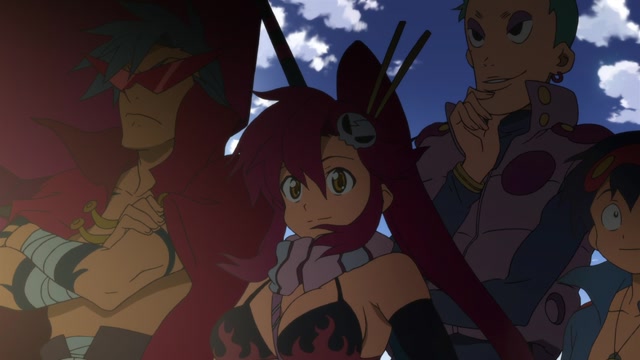


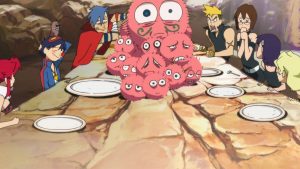

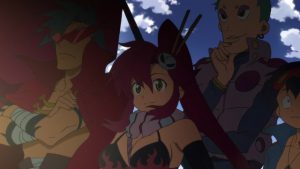
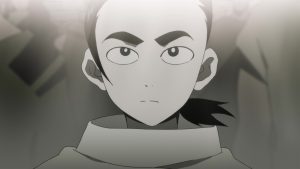
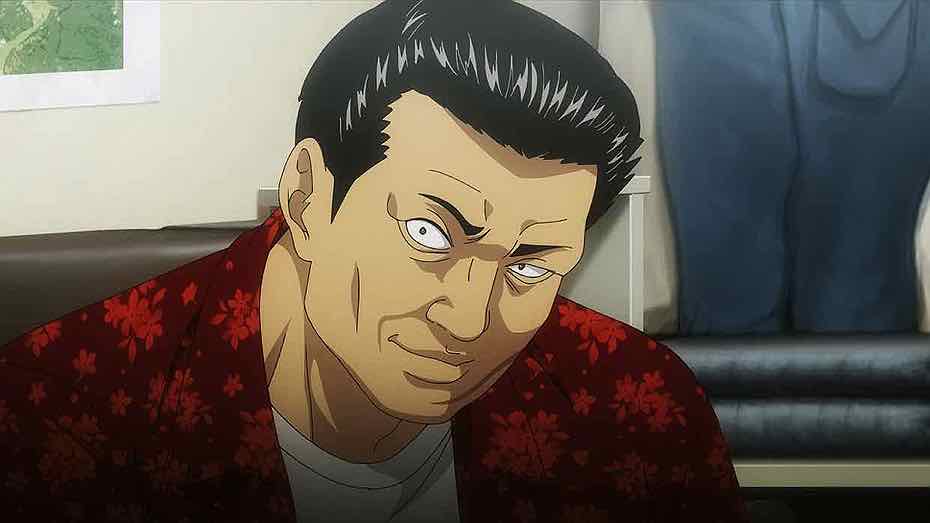
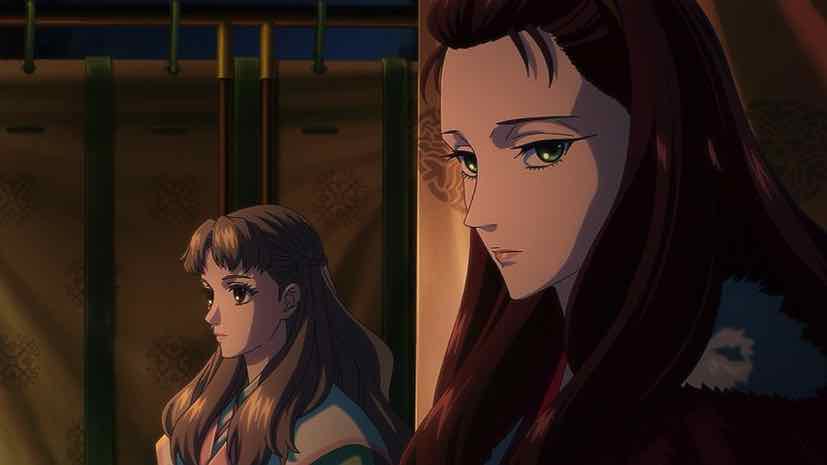
Anchen
May 11, 2020 at 3:45 amI think for me at the time I first watched episode 5 as the show was airing, my fear was mostly that the change in animation was going to be a complete/consistent change and represented some sort of cost cutting or otherwise drop in quality for the animation, which also felt to me like having a “filler” feeling for the episode, which had me worried about the show in general. I also admit I didn’t know a ton about studios and generally how anime production worked back then.
Guardian Enzo
May 11, 2020 at 9:47 amAt that time, Gainax wasn’t known for budget collapses but keeping to a schedule could be a very big problem (though rarely this early in a run).
I just didn’t see what the big deal is. Even great shows have off episodes, and the filler tone you describe was a bigger issue for me than the visuals. I didn’t see the big deal when Kobayashi directed a Dororo ep either – and if anything that was more of a legit disruption, as it was Episode 16 and the second of a two-ep arc.